
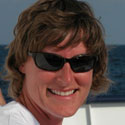
Zoologist, Chief Scientist, NOAA, National Marine Fisheries Service National Systematics Laboratory
Martha Nizinski is a zoologist for NOAA/NMFS National Systematics Laboratory, National Museum of Natural History, Washington, D.C. Dr. Nizinski earned a BS in biology at West Virginia Wesleyan College, a MS in zoology at University of Maryland, and her Ph.D. in marine science at the Virginia Institute of Marine Science, School of Marine Science, College of William and Mary. She has been employed by the Systematics Laboratory since 1987, first as a technician, then as a zoologist. After completion of her doctoral degree in 1998, Dr. Nizinski began her research program studying the biodiversity, biogeography, taxonomy, and systematics of marine invertebrates, particularly decapod crustaceans. She has participated in 25 offshore cruises, five as Chief Scientist. Her current research interests include biodiversity, biogeography and community structure of decapod crustaceans, and biodiversity and community structure of invertebrate fauna associated with deep-water coral reefs. Dr. Nizinski is the Chief Scientist for the Northeast Regional Deep-Sea Coral and Sponge Initiative, investigating deep-sea coral habitats, particularly those is submarine canyons, throughout the region. She is currently a member of the Southeast Regional Deep-Sea Coral and Sponge Initiative science team.

Chief of School and Lifelong Education, North Carolina Museum of Natural Sciences
As Chief of School and Lifelong Education at the North Carolina Museum of Natural Sciences, Liz Baird is accustomed to sharing science with students, teachers, and the general public across the state and around the world. Liz and her staff deliver programs at the Museum, on school grounds and in the field. Liz has participated in deep sea research opportunities, and one of those projects was recently given the National Oceanographic Partnership Program “Excellence in Partnering Award.” Liz leads professional development for teachers in the tropics, and supports activities to reconnect children and nature. Liz founded the national “Take A Child Outside week” program in 2007. The 2010 recipient of the Environmental Educator of the year from the Environmental Educators of North Carolina, she is committed to sharing the wonder of science and nature with everyone. On this mission, Liz will be assisting with education and outreach efforts and serving as a member of the science team.

Engineer, Woods Hole Oceanographic Institution
Zac Berkowitz is an engineer and part of the Sentry AUV operations team. His duties cover the electrical and software systems for the vehicle, their continued development, maintenance, and troubleshooting. He received a B.S. in Physics from Case Western Reserve University, followed by a M.S. in Electrical Engineering from the University of Washington. Previous work involved developing hardware and software for a number of imaging and acoustic instruments with NOAA’s Midwater Assessment and Conservation Engineering group, and building custom acoustic solutions for Kongsberg Maritime’s SIMRAD division.
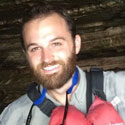
Multibeam Processor, College of Charleston
Shelby Bowden recently graduated with a B.S. in Geology and Environmental Geosciences with a concentration in marine geology from the College of Charleston. His studies there focused on exploring new methods for interpreting and employing bathymetric data as well as coastal geomorphology research. He recently finished an internship aboard the NOAA Ship Okeanos Explorer and has another internship with eTrac Inc this summer before continuing his education in the fall. He hopes to pursue a PhD in marine geology and eventually teach. He will be serving as a multibeam technician aboard the NOAA Ship Pisces, assisting in the acquisition and post-processing of bathymetric data.
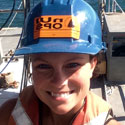
Mechanical Engineer, Woods Hole Oceanographic Institution
Molly Curran is a Mechanical Engineer in the Deep Submergence Lab at Woods Hole Oceanographic Institution (WHOI). She attended the University of New Hampshire to achieve a B.S. in Mechanical Engineering with a minor in Ocean Engineering. While studying at UNH, Molly was part of a team to create a wave energy conversion buoy that was then deployed and tested off the coast of New Hampshire. She has been working in the Deep Submergence Lab for slightly over a year now and has done design work for ROV Jason, Nereid HT Hybrid ROV, and Nereid Under Ice Hybrid ROV. Since being at WHOI she helped design a hydraulic power unit focusing on optimizing efficiency for the use on battery operated vehicles. She loves being on the water, enjoying the outdoors, and playing sports. This will be her first cruise and she’s extremely excited for it!
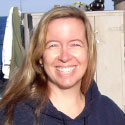
Research Benthic Ecologist, U.S. Geological Survey
Amanda Demopoulos is a Research Benthic Ecologist for the U.S. Geological Survey (USGS) at the Wetland and Aquatic Research Center in Gainesville, Florida. Her work examines the community structure and function of animals found on the seafloor or in the mud (a.k.a. sediment). After completing a post-doctoral fellowship at Scripps Institution of Oceanography, Amanda obtained her current position at USGS, where she conducts research on the community ecology of coastal wetlands, seagrass habitats, shallow and deep-sea corals, seeps, and submarine canyon environments. On this cruise, she will be sampling the sediments using a corer attached to the CTD rosette in order to understand the benthic communities found within canyon mud. She also will filter seawater samples from the Niskin bottles for complementary food-web studies. She is very excited to review the data and images collected on the AUV Sentry dives because they will provide the first glimpse of these unexplored deep-sea habitats.
Amanda Demopoulos received a B.S.in Oceanography from the University of Washington (1996), and M.S. (2000) and Ph.D. (2004) in Biological Oceanography from the University of Hawaii at Manoa.

Mechanical Engineer, Woods Hole Oceanographic Institution
Justin Fujii is a mechanical engineer at the Woods Hole Oceanographic Institution. He holds a degree in aerospace engineering from the University of California, San Diego. He has worked on vehicles such as the Polar ROV and Alvin, but predominantly spends most of his time working with the AUV, Sentry. Justin has participated in a variety of cruises and is in charge of the deployment and recovery of Sentry as well as being the lead mechanic at sea. He has also gained some notoriety with his electrical tape artwork that can be seen from time to time on the face of Sentry.
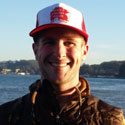
Multibeam Processor, College of Charleston
Will Hefner graduated with a B.S. in Geology from College of Charleston in May of 2016. On this mission, he will be assisting in acquiring and processing multibeam sonar data in order to map several deep water canyons off of the North Carolina coast. Throughout his undergraduate studies, Will utilized multibeam data in order to characterize the geomorphology of a section of the Mendocino Fracture Zone and nearby seamounts. Following his research Will spent time aboard the R/V Savannah where he realized the benefit of multibeam data in studying the geology of the seafloor as well as the integration of mapping with biological studies. He plans on continuing similar work at a graduate level in the future and spending further time at sea.
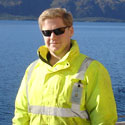
AUV Program Manager, Woods Hole Oceanographic Institution
Carl Kaiser is the AUV program manager for the National Deep Submergence Facility and a principle investigator in the Deep Submergence Lab at Woods Hole Oceanographic Institution. He received his BS, MS and PhD in Mechanical Engineering from Colorado State University with a specialty in Robotics. Following graduate school, he worked for Agilent Technologies setting up manufacturing and supply chains in Southeast Asia. He came to Woods Hole in 2010 in order to return to a more research focused career and took over management of the Sentry AUV in 2011 with the express mission of converting a developmental vehicle into a routinely operational vehicle which is still flexible enough to undertake novel missions nearly half the time. His research interests include human robot interaction, adaptive survey techniques, underwater sensing, and AUV technology in general. When not at work or at sea, he is an avid diver, hiker, and tinkerer.
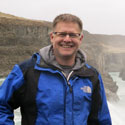
Mechanical Technician, Woods Hole Oceanographic Institution
Mike McCarthy is a Mechanical Technician with the Sentry Group. Since starting at Woods Hole Oceanographic Institution in 2003, he has worked with the Mooring Operations, Engineering and Field Support Group, overseen deck operations for Jumbo Piston Core, Gravity Core and Multicore, and been a member of the ALVIN Group, making pilot in 2008. More recently Mike has been part of Marine Imaging Technologies, a Cape Cod based company that builds custom subsea camera systems. When he’s not at work or at sea, Mike stays busy trying to keep up with his twin toddler girls.
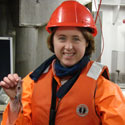
Curator of Mollusks, Delaware Museum of Natural History
Dr. Elizabeth Shea is the Curator of Mollusks at the Delaware Museum of Natural History in Wilmington, DE. She graduated from the College of William and Mary with a bachelor’s degree in biology and a master’s degree in Marine Sciences. She earned a Ph.D. in Biology from Bryn Mawr College and spent a year as a National Research Council post-doc with the National Marine Fisheries Service in Washington, D.C. Her research focuses on the biodiversity of cephalopods in the northwest Atlantic, and her collections interests include digitizing freshwater and terrestrial molluscan specimen data as part of the NSF funded InvertEBase project. Liz has participated in 17 offshore cruises, including midwater trawling at Bear Seamount, part of the New England Seamount Chain, and at the Gully Marine Protected Area in Atlantic Canada. Recently, she has been involved in exploring the Atlantic canyons with NOAA’s Northeast Regional Deep-Sea Coral and Sponge Initiative where she is analyzing the distribution of benthic octopods and sepiolids in the Atlantic canyons. On the Pisces cruise, Liz will be participating in image annotation with a particular interest in finding cephalopods tucked in, under, around, and on the coral and sponges.
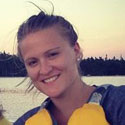
Web Coordinator, NOAA Office of Ocean Exploration and Research
Katie Wagner is the Communications & Public Affairs Specialist in NOAA’s Office of Ocean Exploration and Research (OER). Her work focuses on communicating NOAA’s ocean exploration efforts and accomplishments to various audiences and managing outreach activities for NOAA Ship Okeanos Explorer. Prior to joining OER she worked in NOAA’s Office of Response and Restoration to raise the visibility of the agency’s effort to protect and restore coastal and marine resources following oil spills, hazardous waste releases, and vessel groundings. She has also worked at EPA on the Hydraulic Fracturing Study, the International Union for Conservation of Nature (IUCN) on blue carbon and Arctic issues, and at Fisheries and Oceans Canada on marine protected area planning. Katie holds a Master’s in Marine Management and a Bachelor of Science in Marine Biology from Dalhousie University.